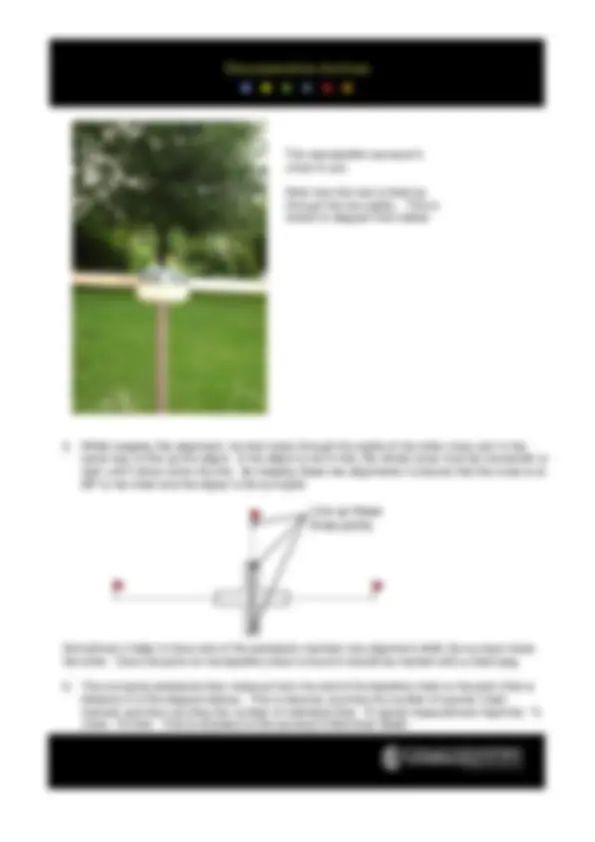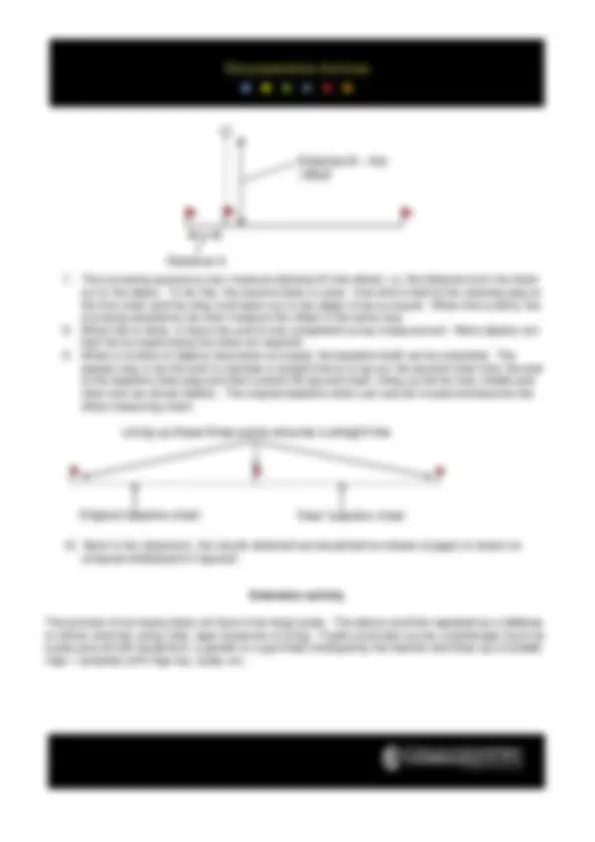




Study with the several resources on Docsity

Earn points by helping other students or get them with a premium plan


Prepare for your exams
Study with the several resources on Docsity

Earn points to download
Earn points by helping other students or get them with a premium plan
Community
Ask the community for help and clear up your study doubts
Discover the best universities in your country according to Docsity users
Free resources
Download our free guides on studying techniques, anxiety management strategies, and thesis advice from Docsity tutors
Instructions for a chain surveying activity suitable for children of various levels and aptitudes. The activity involves dividing students into groups, appointing roles, and using a surveyor's cross and chains to measure distances between objects. The exercise enhances students' understanding of geometry and right-angle triangles, while improving their counting and teamwork skills.
Typology: Study notes
1 / 4

This page cannot be seen from the preview
Don't miss anything!



Teacher Notes and Instructions for Chain Surveying Activity
This activity requires a minimum of four children in the active roles but works with groups of eight to ten. Depending on the time and teaching assistance available, larger numbers should be split into smaller groups with each group undertaking the activity in turn. Small groups can do the survey and record the information at the same time. With two or more groups, one group can do the surveying while the others observe and record the information. The activity is suitable for children of most levels and aptitudes. The only mathematical skill required is the ability to count the number of links on a chain. Basic geometry (i.e. familiarity with right-angle triangles and angles) is useful to understand the technique but it is not essential.
Method
Other children can be used as objects to be surveyed. The various tasks can be rotated through the group so that all the children can experience the different roles.
The reproduction Surveyor’s Cross. The sights are the silver objects at the end of the cross arms. The dashed line represents the line-of- sight of a surveyor looking from the left through the sights to an object in the distance.
‘Sights’
Extension activity
The process of surveying does not have to be large scale. The above could be repeated as a tabletop or indoor exercise using rules, tape measures or string. Pupils could also survey a landscape (such as a play ground with equipment, a garden or a gym/hall) arranged by the teacher and draw up a suitable map – complete with map key, scale, etc.